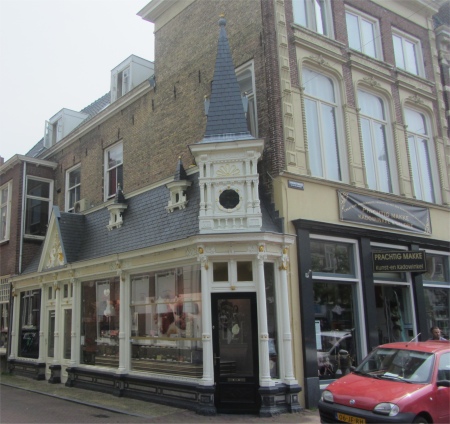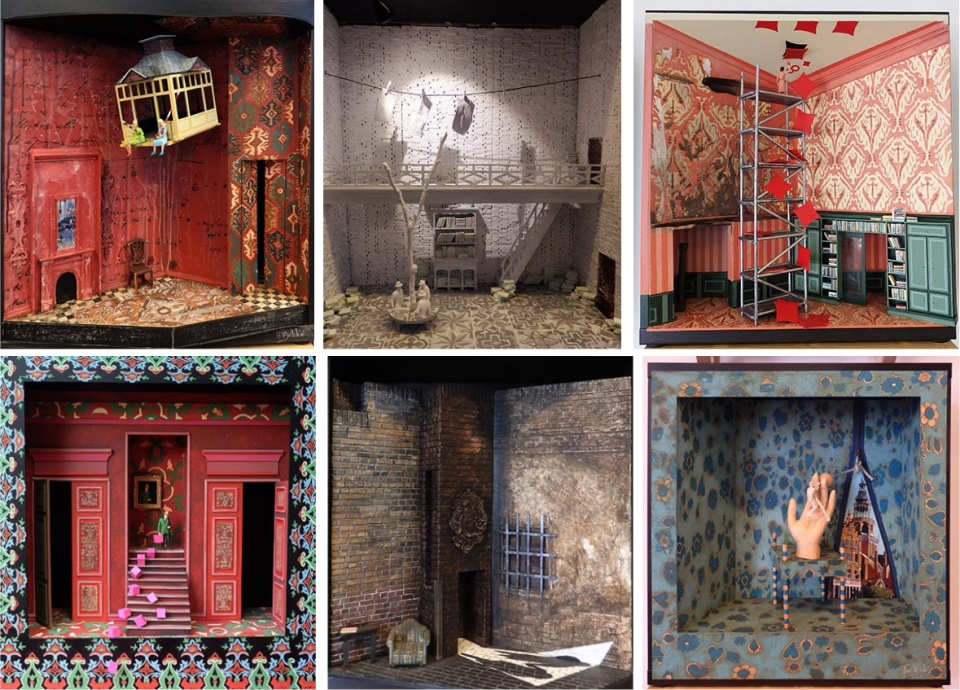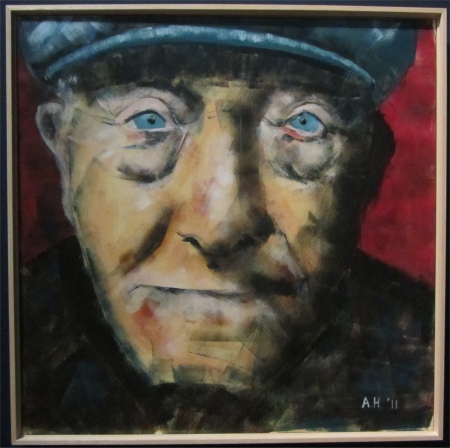While this was happening, a small motorboat moored up on the bank opposite us. "Good morning Dave," a voice shouted out. I turned to see where this unexpected call emanated, and discovered if was from Wilhelm, the harbour master. He had delivered the boat for the old man and the young chap to use to inspect the hydraulics under the bridge. The young fellow must have been an engineer.
Hydraulics man disappeared into a void under the land part of the bridge, and the old man went off in the boat to get some tools. On his return the boat's outboard motor died on him, and no matter what he did, it refused to start. He was adrift, without a paddle literally, but he located a scoop in the innards of his craft and scooped the boat ashore. Then he just manhandled the boat around to the bridge to rejoin the young man. Boy, don't we live exciting lives.
Poor Rex was still suffering from crippling spasms, so he was intending to have a rest day today; he was secretly looking forward to the chores of clothes laundering, sad, I know.
 Chocolate Shop |
As the expression goes, even the best laid plans ........ When I arrived, my interior had a dizzy fit, and I spent the first 2.5 hours drifting from one coffee shop to another. I needed to be in close proximity to toilets.
When I felt confident that my entire insides were scattered across a privy of toilets across the city, I sought out the art dealers I had spotted. Now for my huge disappointment, almost all seemed to be open from Wednesday/Thursday through till Saturday. The couple that stated they were open on Tuesday were shut. As I spread my net further, I was having no joy. I came across a poster advertising an exhibition, the image on the poster featuring the rear end of an elephant with its rider ensconced on top captivated in charcoal and watercolour. The economy of line and looseness of the watercolour really appealed to me. I managed to chat with an old woman who lived next door to where the poster was being displayed. Yes, the exhibition was on as indicated in the text, but what I had not made out was the exhibition was on show over the border in Germany.
By chance I stumbled across an art dealer's gallery, Atelier Hans Wijnstock, by the canal in Voorstreek. "Spreekt u Engels?" I asked.
"Yes", he replied with a broad smile.
"Do you mind if I look around your gallery?" I followed up.
"Of course you can look around, I have been waiting for you all day," he announced.
 A Flavour of the Many Model Theatrical Sets |
His wife arrived with a cup of tea for him, and the two went to sit outside. "Just yell if you have any questions!" he shouted, and I was left to peruse to my heart's content.
As I was leaving, he got on his hobby-horse again, this time his topic was immigrants. "You see this man walking down the street," he said, nodding in the direction of a solitary figure approaching. "He is from Morocco, and all he does all day long is walk up and down this street, and we are all paying for him. Do you know it costs around one million Euros each year to support each immigrant?" That was a figure I very much doubted, and I did not want to get involved in this sort of debate, so I thanked the chap for letting me look around, I wished him well, took my leave, and became another solitary person walking down the street.
As I headed back towards the centre of the city, I received a call from Sally, my eldest daughter. She informed me she was attending a conference in Manchester, and she and some of the attendees were sharing an old Victorian doctor's house by Salford Quays, which they had arranged via Airbnb. The lass seemed to be enjoying the conference and her new found friends. She had studied in Manchester, and some of her university friends still lived in the city, so she was busy catching up with them too. As you can deduce, Sally crams as much into life as possible, a sound philosophy.
I worked my way around to the Fries Museum which I understood to have some art on display. With Leeuwarden being the capital of the Dutch province of Friesland (Fryslân), the Fries Museum (Museum of Friesland) quite rightly takes centre stage on the Wilhelminaplein. The museum has a rich history spanning almost 190 years. In 2013, it moved into the first newly constructed Dutch museum building of the 21st century. As the main repository of Friesland's material heritage, it is recognised internationally for key aspects of its collection. These include spectacular treasures excavated from ancient Frisian mounds, 17th- and 18th-century Frisian silverware, and works by the 19th-century painter Lawrence Alma-Tadema, who was born near Leeuwarden. Also housed here is the Hindeloopen room that became an international icon of northern European identity at Paris's Great Exhibition of 1878, as well as items highlighting the legacy of Mata Hari, who was born in Leeuwarden. Old Master painters and 20th-century Frisian artists such as Gerrit Benner stand alongside Dutch and international contemporary art and design. Through these objects, the Museum of Friesland tells stories about Friesland's eleven cities and the countryside, the love-hate relationship that Frisians have with water, and the quest to define Frisian culture and Friesland's position in the world.
The lady on reception was very helpful and chatty. She told me of her son who had studied tourism and had now worked for four years in London. "I'm intending to visit him soon for four days," she excitably told me. "I love the UK, particularly Brighton and Eastbourne," she continued. I was impressed when she detected traces of a northern accent in my speech, and extremely impressed when she placed me in the Lake District. "I spent some time in Keswick," she added.
 Wilhelminaplein from Fries Museum |
One area of the museum that particularly intrigued me was the section that focussed on Hindeloopen, a small town that we had visited in 2015. Why was this? The stubborn Frisian town of Hindeloopen used to be a real metropolis. However, Friesland was less appealing to the inhabitants of this town than the rest of the world. On their trading trips Hinderloopers brought Dutch furniture from Amsterdam, fabrics from India and porcelain from China. This created a typical Hindelooper style that combined authentic Dutch and exotic elements. In the 17th and 18th centuries the Hindelooper sea captains retuned home with goods from all over the world. Through these many influences Hindeloopen looked very different from the rest of Friesland. Women wore colourful fabrics from India, Asian porcelain decorated living rooms, and richly decorated wooden furniture was widely used. Trade collapsed in the late 18th century and Hindeloopen became isolated. The population concentrated more on fishing rather than on commerce and the flow of foreign influences ceased. The hodgepodge of Dutch and exotic home interiors and clothing survived and came to be known as 'typically Hindeloopen'.
Already in the 19th century people were aware of the special Hindelooper style. The colourful Hindelooper Room in this section had captured the hearts of visitors to the 1878 World Exhibition in Paris. It was a characteristic Hindelooper interior that came to be known as 'typically Dutch'. After the World Expo, the chamber, which could be dismantled into several components, travelled all over the world. Artists today are still influenced by the Hindeloopen style. Fashion designers Victor and Rolf have made dresses inspired by this idiosyncratic style, and it inspired a collaboration between Christien Meindertsma and the Roosje Oud Hindelooper Kunst 1894 Foundation that produced new furniture in the Hindelooper tradition. I must admit I had gained a far wider appreciation of Hindeloopen through this section than I had gained in the actual town.


